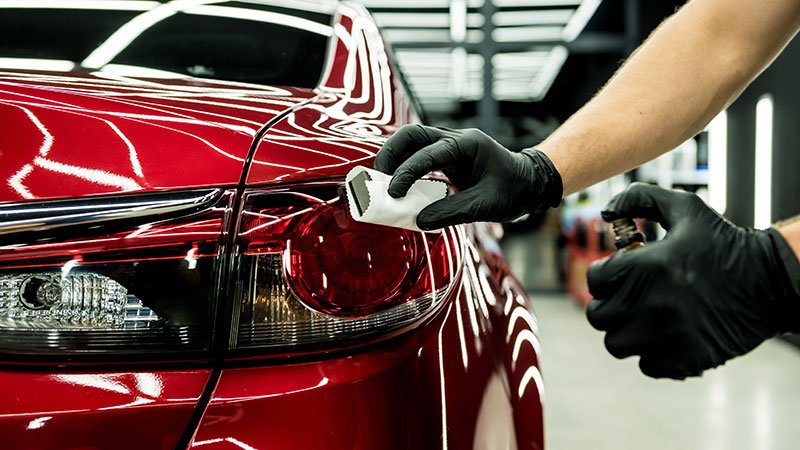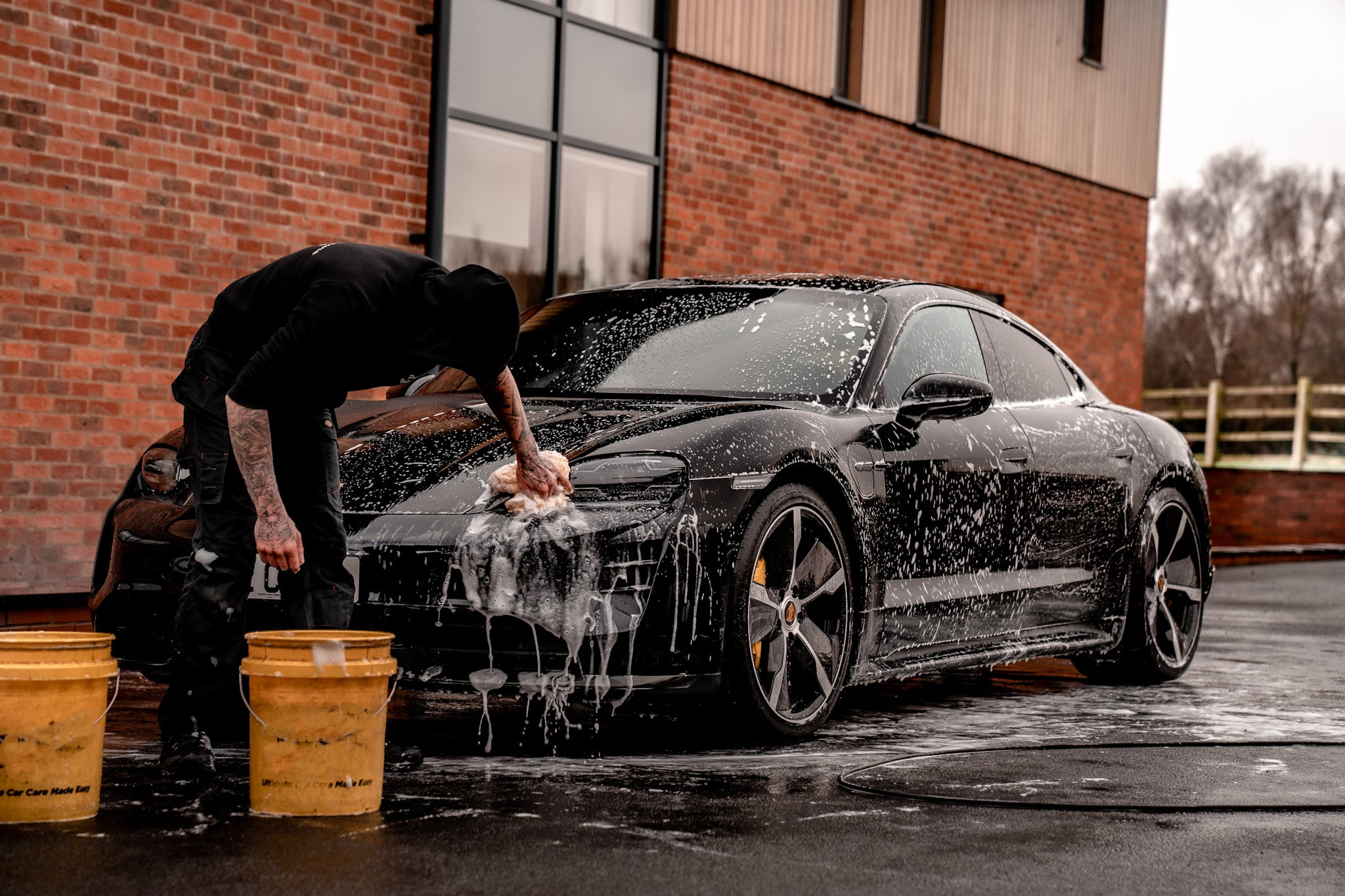Transform Your Vehicle with Expert Ceramic Coatings San Jose
Transform Your Vehicle with Expert Ceramic Coatings San Jose
Blog Article
Introducing the Science Behind Ceramic Coatings: Just How Does It Work and Why Is It Above Typical Options?
Ceramic layers have been gaining appeal in different industries for their extraordinary performance and toughness. Recognizing how ceramic finishes job and why they outshine standard alternatives is critical for those seeking to enhance the durability and resilience of their products.
The Chemistry of Ceramic Coatings
In understanding ceramic coatings, delving into the intricate chemistry behind their structure is vital for grasping their capability and sturdiness. Ceramic finishings are mostly composed of silicon dioxide (SiO2), which develops a strong and protective layer when related to numerous surface areas. This chemical framework offers extraordinary resistance to warm, chemicals, and corrosion, making ceramic coatings extremely searched for for a variety of applications.
The chemistry behind ceramic finishes includes the formation of covalent bonds in between silicon and oxygen atoms, creating an inflexible network that enhances the covering's toughness and toughness. Furthermore, the visibility of various other elements such as light weight aluminum, zirconium, and titanium additional boosts the layer's homes, using boosted solidity and bond to surfaces.
Recognizing the chemical composition of ceramic finishings enables the personalization of formulations to suit particular needs, whether it be for automobile, industrial, or residential purposes. By using the power of chemistry, ceramic coverings remain to pave the method for superior defense and efficiency in numerous markets.
Advantages of Ceramic Coatings

As an outcome, ceramic coatings make cleansing and keeping surface areas a lot simpler and less taxing. In general, the wide variety of advantages provided by ceramic coverings make them a remarkable choice compared to standard finishing approaches.
How Ceramic Coatings Bond
Ceramic finishings bond to surface areas via a process that entails molecular attachment and chemical communications. When a ceramic layer is put on a surface, it creates a solid bond by chemically sticking to the surface area at a molecular level. This bond is developed with the formation of covalent bonds, which are very strong and sturdy. The ceramic covering's particles permeate the pores of the surface area, producing a limited grasp that stands up to separation.
In addition, the chemical interactions between the ceramic finishing and the surface even more boost the bond. ceramic coatings san jose. These interactions permit the ceramic finishing to develop a continual and smooth layer on the surface area, providing superb defense and toughness. Unlike typical coatings that may remain on the surface area without fully bonding, ceramic layers develop an irreversible bond that is resistant to chemicals, UV rays, and extreme ecological problems

Fundamentally, the bonding system of ceramic finishes ensures a effective and long-lasting safety layer that outperforms typical coating choices. This remarkable bond contributes to the sturdiness, scratch resistance, and long life of ceramic coverings, making them a preferred choice for different applications.
Durability of Ceramic Coatings
The exceptional durability of ceramic coatings stems from their robust molecular adhesion and chemical interactions with surface areas, making sure a durable protective layer that surpasses typical finish alternatives. Once used, ceramic finishes develop a solid bond with the substrate, producing a durable barrier against numerous ecological stressors such as UV radiation, chemicals, and abrasions. This bond is so secure that it can stand up to the roughness of everyday usage without deteriorating or deteriorating promptly.
Unlike typical finishes that might deteriorate over time, ceramic finishes preserve their stability for a prolonged period, giving lasting protection for the underlying surface area. The strong molecular framework of ceramic coverings resists breaking, fading, and peeling, making sure that the surface stays protected and cosmetically pleasing for years to come. This resilience not only reduces the demand for regular reapplications but likewise saves money and time in the lengthy run. On the whole, the phenomenal longevity of ceramic layers makes them a remarkable choice for shielding a variety of surface areas in various applications.
Ceramic Coatings Vs. Conventional Alternatives
In comparison to standard covering techniques, ceramic finishings provide a distinctive mix of longevity and safety capabilities that set them apart in different surface security applications. Standard choices such as wax or sealants offer a temporary layer of protection that can diminish rapidly, needing regular reapplication. On find more information the various other hand, ceramic finishings develop a solid bond with the surface, developing a semi-permanent or long-term barrier that is extremely resistant to abrasion, chemicals, UV rays, and severe temperatures.
Furthermore, ceramic layers supply superior hydrophobic residential or commercial properties contrasted to traditional layers. The hydrophobic nature of ceramic layers triggers water to grain up and roll off the surface area, lugging dust and contaminants with it. This self-cleaning result helps to keep the surface's cleanliness and gloss for extended durations, minimizing the demand for constant maintenance.
Furthermore, ceramic layers have a thicker layer contrasted to conventional options, giving improved scratch resistance and security against small impacts. This durability ensures durable performance and aids protect the aesthetic allure of the dealt with surface for an extended duration.
Conclusion
To conclude, the science behind ceramic finishings hinges on their chemical make-up and bonding properties, making them above conventional alternatives. The benefits of ceramic layers include raised resilience and security for surface areas. By recognizing just how ceramic coatings job and their advantages over standard choices, one can make enlightened choices when considering finishing alternatives for various applications.
Unlike standard coverings that might rest on the surface area without fully bonding, ceramic finishings great site develop an irreversible bond that is immune to chemicals, UV rays, and harsh environmental conditions.
The exceptional long life of ceramic coverings stems from their durable molecular adhesion and chemical interactions with surface areas, making sure a durable safety layer that surpasses conventional finish choices.Unlike typical coatings that may deteriorate over time, ceramic layers keep their integrity for an extended period, providing long-lasting security for the underlying surface area.In contrast to traditional finish approaches, ceramic finishes supply a distinctive blend of durability and protective abilities that set them apart in numerous surface area security applications. By comprehending exactly how ceramic finishings work and their advantages over standard choices, one can make informed decisions see this when taking into consideration finish choices for numerous applications.
Report this page